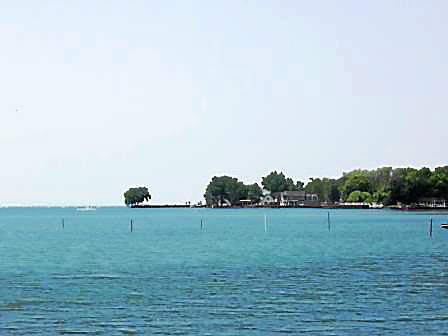Pollution total dumped in lake hits 3.7 billion gallons
by Chad Selwesky
The rain showers of Sunday and Monday created sewage overflows that dumped 79 million gallons into Lake St. Clair, bringing the total pollution this year from sewer systems discharged into the lake to 3.7 billion gallons.
The GWK Drain in Oakland County released 72 million gallons, and the Chapaton sewage basin in St. Clair Shores spilled another 7 million gallons. Both facilities partially treat their discharges by adding chlorine and removing solid waste before releasing them into the waterways.
Brent Avery, operations manager at Chapaton, said the situation could have been worse, as the nearby Martin retention basin and the windy weather also presented concerns.
“We filled to the brim at Martin (basin), but did not discharge” Avery said. “We did not experience a power outage, but it was sure fluctuating.”
The 2014 totals reflect the massive sewage dumping on Aug. 11-12 during the unprecedented flooding experienced across southern Oakland and Macomb counties.
During that time period, the GWK Drain, traditionally known as the Twelve Towns Drain, flushed 2.1 billion gallons of partially treated sewage and rainwater into Macomb County’s Red Run Drain at Dequindre, south of 13 Mile Road. From there, the contaminants flow through residential neighborhoods to the Clinton River and then out to Lake St. Clair.
The Chapaton system, located at 9 Mile Road and Jefferson and operated by the Macomb County Public Works Commissioner’s Office, spewed 166 million gallons when the floodwaters hit.
In addition, the amount of untreated raw sewage dumped into the waters by Macomb County communities during the flood was raised dramatically in the final numbers, from nearly 6 million gallons to 140 million gallons.
At one point earlier this fall, officials estimated that the county’s pollution total would hit 4 billion gallons by the end of the year. Sewage system officials say that the overflows are diluted by rain water and present no danger to the public. At the same time, environmental activists say the E. coli bacteria in the discharges is the main cause of the hundreds of beach closings on Lake St. Clair over the past several years.
Water tainted with E. coli can cause skin rashes, nausea, vomiting or diarrhea and it can lead to exposure to viruses.
The total number of gallons dumped into the lake this year equals the volume of 5,300 Olympic-size swimming pools.
Source: Macomb Daily.





